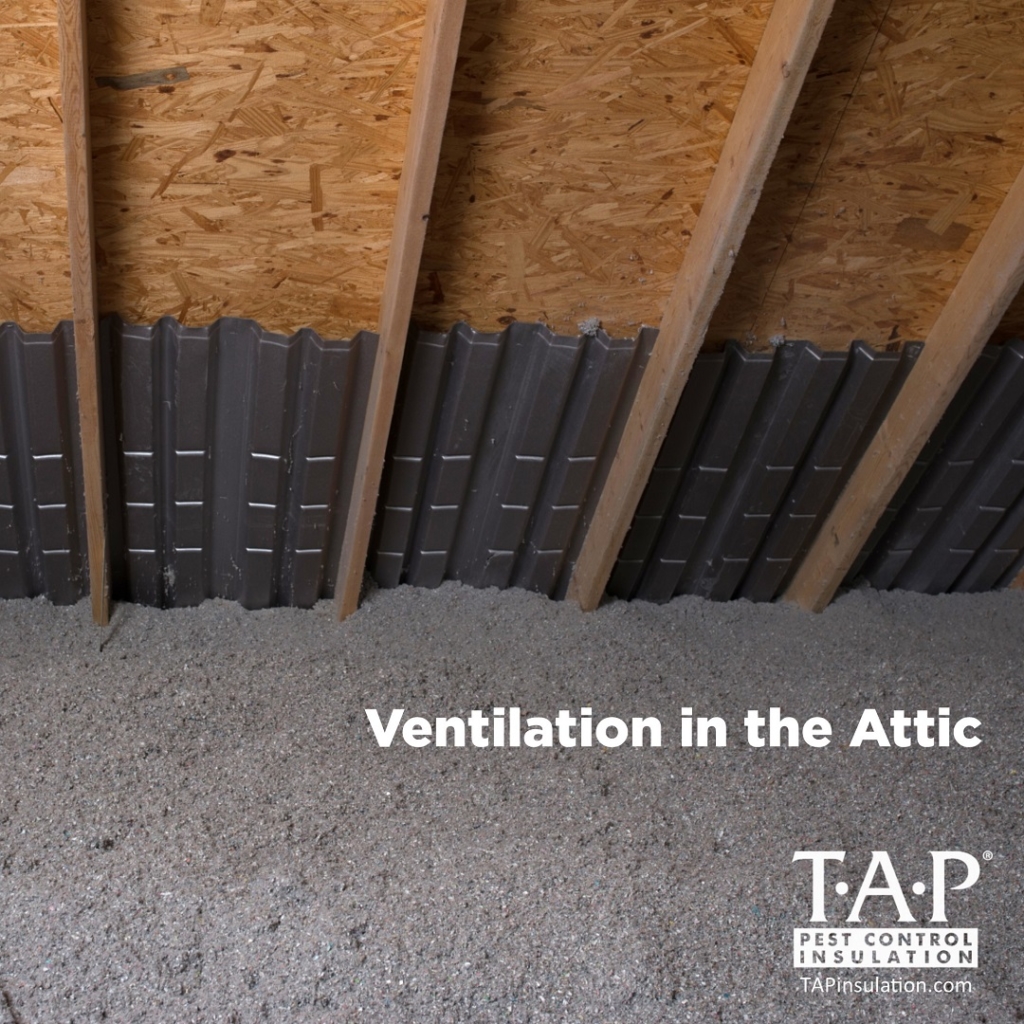
When installing EPA-registered TAP Pest Control Insulation in the attic, it is critical to consider the Ventilation in the Attic. It is said that roughly 90% of all homes in the US are under insulated. A great number of them also suffer from poor ventilation, high levels of moisture, and low performing energy efficiency.
The main concern with improperly ventilated attic spaces is the accumulation of moisture and no mechanism for moving the moisture from the attic. The problem with moisture is that is can create mold, foster health issues for the homeowner, and cause costly headaches due to structural damage over time.
Before installing TAP® Pest Control Insulation, or any insulation for that matter, consider the attic’s ventilation. Here are a few points to review:
Air Flow in the Attic
In order to keep the attic’s air fresh as well as a cool roof surface in the summer and a warm roof surface in the winter, proper air circulation is needed. Signs of improper air flow include:
- The absence of air exchange in the attic
- Missing vents (i.e., ridge vents, gable vents, soffit vents, continuous soffit vents)
- Visibly curled or cracked shingles
If these items are amiss, the situation must be improved prior to the installation of insulation to prevent future damage.
SOLUTION: Install a cardboard chute or styrofoam baffle just above each soffit vent along the roof line. This allows air to flow in and out of the attic. It is recommended to place 1 baffle/vent for every 300 sq. ft. of ceiling space If soffit vents are not in play, work to ensure that ridge and gable vents are in working condition and free from obstruction.
Clear the Area Regarding Roof Ventilation
The different types of ventilation, as listed above, vary across the country and across different home designs. What works for one attic might not be a viable solution or provide enough air flow for another. Consulting with a professional on the best ventilation system when one is not present is a wise step. This prevents structural damage and aids with energy efficiency.
Insulation Amounts Matter
Insufficient insulation during the winter months can lead to moisture build up. The same can be said for the warmer summer months which can speed up moisture accumulation and case wear and tear on the home’s HVAC system. Use the handy TAP® Bag Calculator or consult the U.S. Department of Energy’s International Conservation Climate Map to achieve the correct level of insulation recommended for the home based on the home’s geographical location.
For additional insight and information on ventilation in the attic, contact us.

